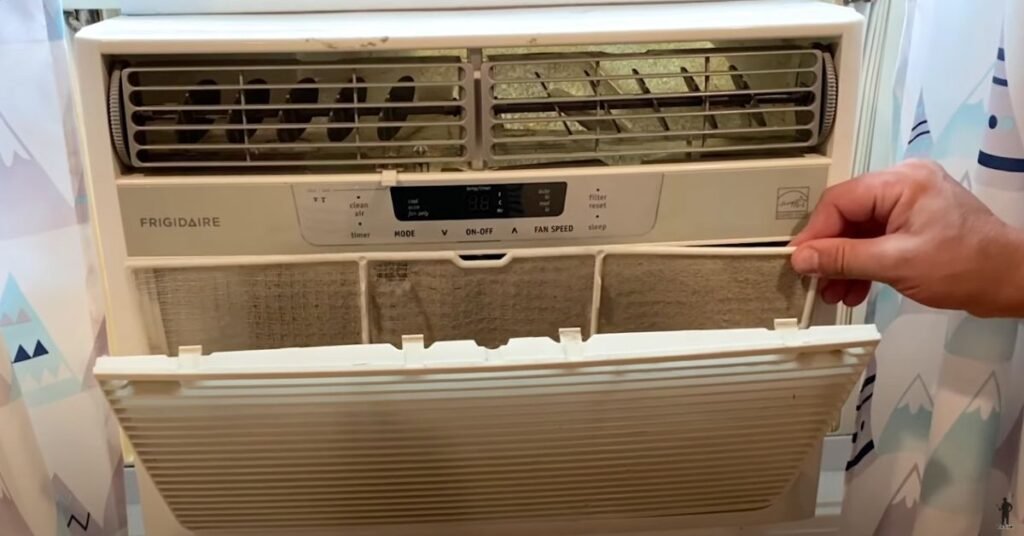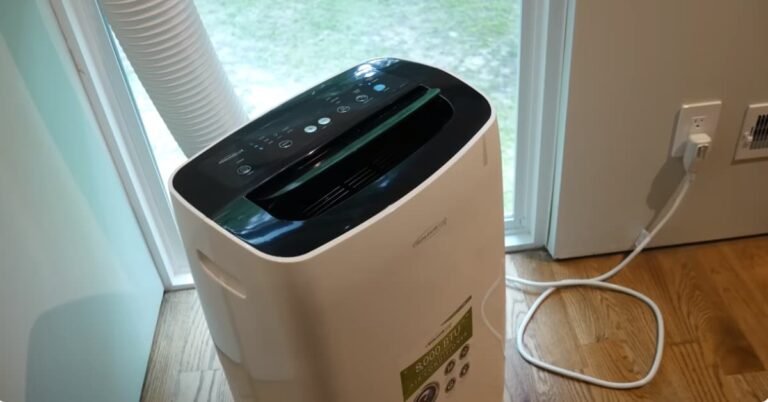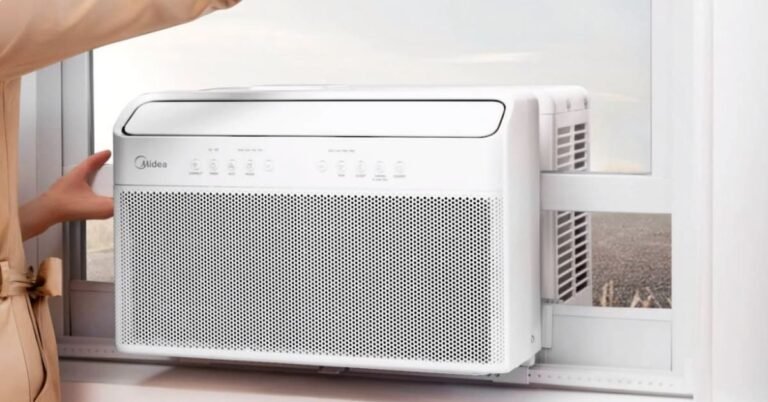What Does Filter Reset Mean on a Window Air Conditioner?
Maintaining a window air conditioner ensures optimal performance and longevity. One key feature often noticed is the filter reset function. Many users wonder about its significance and how it affects the unit’s operation.
Understanding this function is crucial for keeping the air conditioner running efficiently. It relates to the air filter, a vital component in maintaining air quality and system efficiency.
So, let’s explore what the filter reset function means.

Filter Reset Mean On A Window Air Conditioner?
The filter reset function on a window air conditioner indicates when it’s time to clean or replace the air filter. Air conditioners work best with clean filters. Over time, dust and debris accumulate, reducing efficiency and air quality. The filter reset light acts as a reminder, ensuring optimal performance.
When the light comes on, it signals that the filter has reached its maximum capacity for dirt. Cleaning or replacing the filter improves airflow, making the unit more efficient. This not only cools your space better but also uses less energy, saving on electricity bills.
How to Reset the Filter?
Resetting the filter on your window air conditioner ensures it operates efficiently. Here’s a detailed guide to help you through the process.
Turn Off the Air Conditioner
First, always turn off the air conditioner before performing any maintenance. Locate the power button on the unit and switch it off. Unplugging the unit is also a good practice to ensure no power is flowing through the system. This step prepares the air conditioner for the filter reset process.
Open the Front Panel
Next, open the front panel of the air conditioner to access the filter. The front panel is usually located on the front of the unit and can be opened by pressing or pulling on the designated tabs or handles. Carefully lift or slide the panel to reveal the filter inside. Opening the panel provides access to the filter, allowing you to proceed with cleaning or replacing it.
Remove and Clean the Filter
Remove the filter from the air conditioner. Check the filter for dirt and debris. If it is washable, rinse it under running water until clean. Let the filter dry completely before reinserting it into the unit. A clean filter improves airflow and efficiency.
Replace the Filter if Necessary
Purchase a compatible filter from a hardware store or the air conditioner manufacturer. Install the new filter by sliding it into the designated slot, ensuring it fits snugly. Replacing a worn filter ensures the air conditioner operates at its best, maintaining good air quality.
Reset the Filter Indicator
After cleaning or replacing the filter, reset the filter indicator. Find the reset button on the control panel of your air conditioner. Hold down the reset button for several seconds until the indicator light switches off. This resets the reminder system, ensuring you receive timely alerts for future filter maintenance.
Close the Front Panel and Turn On the Unit
Close the front panel securely to protect the internal components. Ensure it snaps back into place properly. Plug the air conditioner back in and turn it on. Verify that the filter reset light is off and the unit is running smoothly. Regular maintenance, including resetting the filter, keeps your air conditioner efficient and your indoor air clean.

When to Use the Filter Reset Function?
Knowing when to use the filter reset function on a window air conditioner ensures optimal performance and air quality. This function alerts you to clean or replace the filter, maintaining the unit’s efficiency. Here are some scenarios when using the filter reset function is necessary.
After High Usage Periods
After using your air conditioner extensively, check the filter. Heavy use can cause the filter to accumulate dust and debris quickly. When the filter is clogged, the unit works harder to cool the space, using more energy. Resetting the filter after high usage periods ensures it remains clean, helping the air conditioner function efficiently and maintain good air quality.
At the Start of Each Season
At the beginning of each cooling season, reset the filter. During the off-season, dust and allergens can settle in the filter. Cleaning or replacing the filter before heavy use starts ensures the air conditioner runs smoothly. This practice prepares the unit for optimal performance, providing effective cooling and maintaining a clean indoor environment.
When You Notice Reduced Efficiency
If your air conditioner is not cooling as effectively, check the filter. A dirty filter restricts airflow, making the unit less efficient. Using the filter reset function after cleaning or replacing the filter can restore the air conditioner’s performance. This step ensures the unit cools efficiently, saving energy and improving comfort.
After Cleaning or Replacing the Filter
Always use the filter reset function after cleaning or replacing the filter. This resets the system’s reminder to alert you when the next cleaning is due. Keeping this schedule helps maintain the air conditioner’s efficiency. Regularly resetting the filter indicator ensures timely maintenance, prolonging the unit’s lifespan and enhancing air quality.
During Allergy Season
During allergy season, the air contains more pollutants. These particles can quickly clog the air filter. Regularly checking and resetting the filter during these times helps maintain a cleaner indoor environment. This practice is especially important for households with allergy sufferers, as it ensures the air conditioner effectively removes allergens.

Common Issues and Troubleshooting
Window air conditioners can sometimes face problems that need troubleshooting. Knowing common issues and solutions can help maintain optimal performance.
Filter Reset Light Stays On: If the filter reset light remains on after cleaning or replacing the filter, ensure you press the reset button correctly. Press the button for a few seconds until the light goes out. If the light persists, there may be an issue with the reset function. Refer to the user manual for specific instructions or contact customer support.
Filter Indicator Not Working: Sometimes, the filter indicator may not light up even when the filter is dirty. This could be due to a malfunctioning sensor. Regularly check and clean the filter regardless of the indicator. If the issue persists, consult a technician to inspect the sensor and reset the mechanism.
Unit Not Resetting After Power Outage: After a power outage, the filter reset function might not work properly. Unplug the air conditioner and wait for a few minutes. Plug it back in and try resetting the filter again. If the problem continues, there might be an issue with the unit’s internal settings. A professional inspection may be necessary.
Reset Button is Unresponsive: An unresponsive reset button can be due to dirt or debris buildup. Clean the button area gently with a soft cloth. Ensure there is no obstruction. If the button still does not respond, the control panel might need servicing. Contact a qualified technician for help.
Frequent Filter Reset Alerts: If the filter reset light comes on too frequently, check the environment. Excessive dust or pollution may cause the filter to clog quickly. Clean the filter more often in such conditions. Also, inspect the air conditioner for any other issues that might be causing rapid filter clogging.
Conclusion
The filter reset function on a window air conditioner is a crucial feature for maintaining optimal performance. It indicates when it’s time to clean or replace the air filter, ensuring the unit runs efficiently and provides good air quality.
Regularly using the filter reset function prevents clogging, reduces energy consumption, and extends the lifespan of the air conditioner. By keeping the filter clean, you enhance cooling efficiency and maintain a healthier indoor environment.






